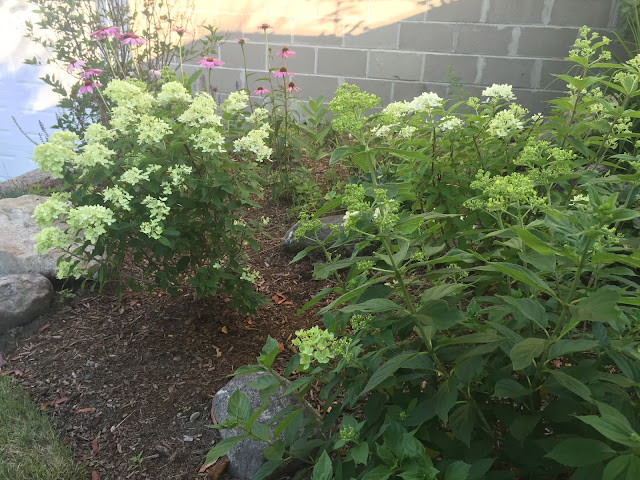For the longest time......I fought it. I refused to design with Hydrangeas. I thought they were too cliche. Every grandma on the cul-de-sac had them planted along her front porch. They were boring and as tacky as those grafted Weeping Kwanzan Cherries. As a designer, I thought I was being bold by choosing not to spec them. Well....Somewhere along the line I changed my tune.
I always ask clients if they have favorite plants that I should try to incorporate into a planting design. Of course, "Hydrangeas!" was the reply I usually got, and happy clients = successful design. So I dove in. As I became more open to using Hydrangeas, the more I realized that there were TONS of varieties: Blues, pinks, purplish, greens, pure whites, greenish whites, blush whites. Then, there are lace caps, the mop heads, panicles, 'Incrediballs', tree forms, vine forms, oak leaves....... Hydrangeas for shade, Hydrangeas for sun, huge ones, compact ones......it goes on and on. The variety with-in the genus helped me grow to appreciate it.
One of the more popular varieties making a surge of late is Hydrangea paniculata 'Little Lime' (
zones 3-8). Being sold under the 'Proven Winners' brand, this Dwarf Panicle Hydrangea is widely available and has received numerous industry awards over the last few years. 'Little Lime' is a dwarf version of the also popular 'Lime Light'. These should get to be 3-5' at maturity. I've got these guys right in the front of the bed. They are the definitely the mid-summer focal point.
These plants started as #3 pots and were planted in early/mid May. They started blooming with-in the last couple weeks. I expect that they'll probably bloom a little earlier next year when they're not recovering from transplant.
I've got these growing in a 'part shade' condition, under the canopy of an Ash tree, in a new bed I created this spring on the southern side of the
Bonin Architects office. In this morning's early shade, the pale-green panicles really popped against the darker backdrop of the bed. I really enjoy the contrast with the Magnus Coneflower
(Echinacea purpurea 'Magnus') planted adjacent to them as well. It will be interesting to see how this combo compliments each other as the summer fades into fall and those pale green flowers begin to blush with pink. (Maybe the subject of a later post...we'll see.)

























